Intramuros Through the Ages: Downfall, Revival, Sustainability, Adaptability
Updated as of 12 December 2022, 0936.

Overview
The previous Young Scholars Conference (YSC) held last 2021 dwelt on Intramuros as a living city. Indeed, it has been one still alive. However, it must go along with the dynamic and ever-changing world to remain alive and relevant for the present. For almost five centuries since its establishment as a colonial center, Intramuros has neither lived a monotonous life of splendor and might nor of blight and despondency. It did not keep a single consistent identity as it now stands before us as a monument to Filipino intellectual growth, architectural and engineering feats, and anti-colonial struggles. As it lives its long life across the ages, Intramuros and its people (including its present-day residents, students, and visitors) repeatedly fell, then adapted to the challenges of their time, and ultimately, rose from various adversities. Nevertheless, convenient as it may, one must not fall to the charm of the much romanticized and debated narrative of “resilience.” The Filipino people must face that along with these falls, there were losses that can be erased by subscribing entirely to that narrative of “resilience.” We must give justice to what Intramuros and its people have lost. These include the dead, the now-gone institutions, the lost architectural jewels, and the gaping holes in the city’s social fabric that remains yet to be completely mended. Ultimately, justice to the colorful and nuanced life of the Walled City with all its ups and downs remains unfulfilled. Now is a perfect moment to reflect on the invaluable heritage of Intramuros—its past, present, and future—as the nation now stands at the doors of the “post-pandemic” world, facing the challenges of the rapidly changing technological landscape, expansive urbanization and reckless developments, and the global climate crisis.
Conference Date: 12 December 2022
Program:
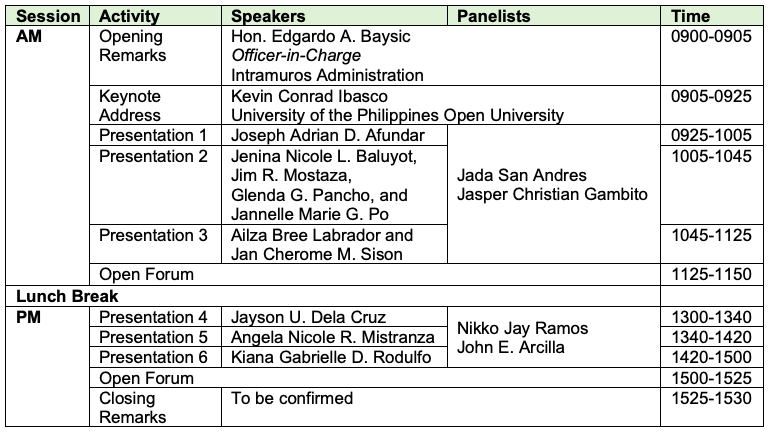
Presentation No. 1

Abstract: Recently, certain commemorations in the Philippines pertaining to its Spanish colonial past have garnered contrasting reactions from the public, in particular the 2021 National Quincentennial Commemorations and 2020 celebration of Araw ng Maynila. These incidents are manifestations of how society continues to grapple with the meanings and interpretations of its complicated past. Around the same time, the world also witnessed how the Black Lives Matter movement influenced groups to topple down monuments memorializing racist historical figures. While the Philippines has not yet experienced any monuments falling down, the aforementioned global movement then begs the question: how do Filipinos view and interpret the monuments we have in the country, especially those relating to the conflicting narratives about our past? This study aims to interrogate the memorialization of Intramuros, through its monuments relating to our Hispanic heritage, and to understand how our Spanish colonial past is interpreted according to two perspectives: the “official” perspective from the authorities managing Intramuros, and the “public” perspective from the masses that tour Intramuros. The researcher will employ the following methods: a survey of the Intramuros Administration’s official Registry of Monuments, physical observations of the selected monuments, and in-depth interviews with the study’s participants. The data gathered will be analyzed using a framework founded on the synthesis of concepts from lieux de mémoire, mnemonic hegemony, and lieux de discorde. In doing so, a critical reexamination of the monuments will aid in the determination of the need to adapt the Walled City’s monuments and other pieces of cultural heritage with the present-day demands of both communities in and outside of the walls.
Keywords: Monuments, Intramuros, memorialization, lieux de mémoire.
Presentation No. 2

Abstract: In order to improve museum literacy and awareness as well as its crucial role in showcasing various histories and cultures to contemporary Filipino society, this study aims to identify and characterize established and accessible museums in the Philippines, specifically the Museo de Intramuros. In addition, the conceptual framework of the project will be based on the conceptual model created by Guerino et al. (2018), entitled “Virtual Museums with Focus on Natural User Interfaces” (VMNUI). As part of the discussion in the paper, the researchers have also modified Kenneth Yellis’ analysis from his article “Museum Education (1990)”. The study seeks to address the fundamental issue by focusing on the virtual museum of Museo de Intramuros; the digital transformation of museums; the function and significance of traditional and virtual museums; and how these virtual museums help in shaping the nation’s history and historical education. The result of assessing the virtual museum of Museo de Intramuros, is that the Museo de Intramuros provides the people with remnants of the ecclesiastical journey of the Filipino people, from the arrival of the Spaniards to more recent years, as shown by the traditional museum’s efficient layout and the high-quality, user-friendly virtual tours available online. Additionally, the researchers also found the many advantages a virtual museum could present to the general public. In the case of the Museo de Intramuros’ virtual tours, it became more accessible to audiences who could not physically visit the museum. Its accessibility can also impact the historical education of the visitors in regards to the religious history of the Philippines.
Keywords: Virtual museums; Museo de Intramuros; museums; education; accessibility.
Presentation No. 3

Abstract: Intramuros studies is a multidisciplinary approach of enriching the knowledge about the famous Walled City of Manila. The history of Intramuros including political, cultural, religious, and socio-economic aspects serve as the core of the studies produced in this field. Yet, many researches done under Intramuros Studies focus on the dominant historical narrative that revolves around institutions within the Walled City. This paper surfaces the history from the perspective of the common folks residing in Intramuros before, during, and after the Second World War. The accounts about the prewar Intramuros show its tranquility, while accounts about the war and the postwar period show the excruciatingly slow decline of Intramuros into an almost abandoned and completely wrecked city. This essay brings to light never-before-seen interview transcripts with Intramuros residents that have only been sitting inside archival folders. Unfolded, these tell a story of how the once-vibrant Walled City fell during the war, and how its residents adapted to the traumatic circumstances that befell them. These narratives from below uncover further nuances to the fall of Intramuros’ esteemed image. Thus, this first-time compilation and analysis of the 1980 Oral History Project of the Intramuros Administration creates an avenue for these accounts to be made public and to finally reach a wider audience.
Keywords: Intramuros Studies, History from Below, Oral History, Second World War, Japanese Occupation, American Occupation
Presentation No. 4

Abstract: This paper examines the post-World War II Intramuros using the case of the Franciscan Family (i.e., Order of Friars Minor, Order of Friars Minor Capuchin, Order of Saint Clare, Secular Franciscan Order) surrounding the conceptual notions of diaspora vis-à-vis public response on Intramuros. Drawing from various archival materials, this paper presents four historical narratives which demarcate succeeding events from the War and how their institutions eventually settled extramuros as influenced by relevant social trends and pragmatic arrangements relative to the conditions of post-War Philippines. Thus, this paper presents that the Diaspora Period of Intramuros’ post-War years provides a foundational context to contemporary Intramuros Studies, to which this paper—in so doing—contributes.
Keywords: Post-War Intramuros, Franciscan Family, Diaspora Period, Intramuros Studies
Presentation No. 5

Abstract: Cholera is a disease that has plagued the Philippines since the early 19th century. It is characterized by diarrhea, vomiting, and dehydration, and is contagious through the ingestion of contaminated food and water. Notably, the disease is heavily tied to a community’s food production, sanitation system, and water works. Intramuros is no stranger to the destruction brought about by cholera during the 1902 epidemic, but specific insight into the cause-effect relationship of sewage systems and the spread of cholera in the Walled City must be further studied. Through the Public Health Ecology framework developed by Christopher Coutts in 2010, I study the general environment, the esteros, the banks of Pasig River, and the moats in Intramuros that were used as sewage structures from 1902 to 1904, assess its correlation with the cases of cholera among the residents of the Walled City and the city of Manila, and examine the American benevolent civilization program and its efforts in public works to address the sanitary and public health crisis inside the Walled City. In reassessing the sewage systems in place during the epidemic, an image of inseparability between public works and public health in Intramuros is constructed—amplifying the need to ameliorate urban planning and the built environment in Manila in order to preserve human health.
Keywords: Cholera; sewage systems; Intramuros
Presentation No. 6

Abstract: During the early 20th century, the Philippines—much like the rest of the world—had its run-ins with infectious diseases that ravaged its population. To rehabilitate and repair the damage caused by the epidemics that hit the country, measures towards public health, welfare and hygiene were established, notably by the American colonial government. Intramuros, being a central figure for life and culture in Manila, was no stranger to the dangers of epidemics and health crises during the early 20th century. Thus, the Walled City was also introduced to American public health structures, which were consequential to their colonial rule, and to the epidemics that plagued the city and the country. The implementation and establishment of American ideologies toward health and hygiene greatly affected native communities that were subservient under colonial rule, as public health and welfare structures regulated the lives and bodies of Filipinos. Considering this, the following study aims to assess the colonial public health systems, measures, and policies implemented due to the outbreaks and epidemics that occurred in the early 20th century Manila, namely in Intramuros. The assessment of such enables a further understanding of policies in health and safety, entangled with colonial social perspectives, recognizing how colonialism and its socio-economic structures impact and function as a determinant of health and safety. It is also through this that an analysis of the imperial durability of the American public health structures–particularly of those implemented in Intramuros–will be assessed in consideration of anthropological perspectives and modern-day public health and welfare policy development.
Keywords: Intramuros; public health; imperial durability; health policy; colonial medicine; health system.
Paper Presenters
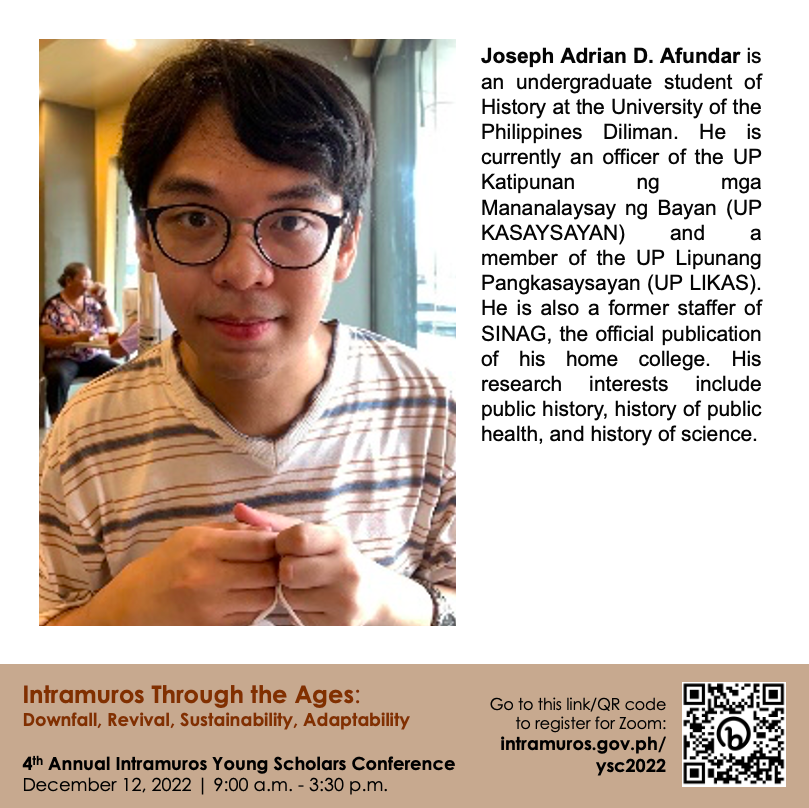 Joseph Adrian D. Afundar | 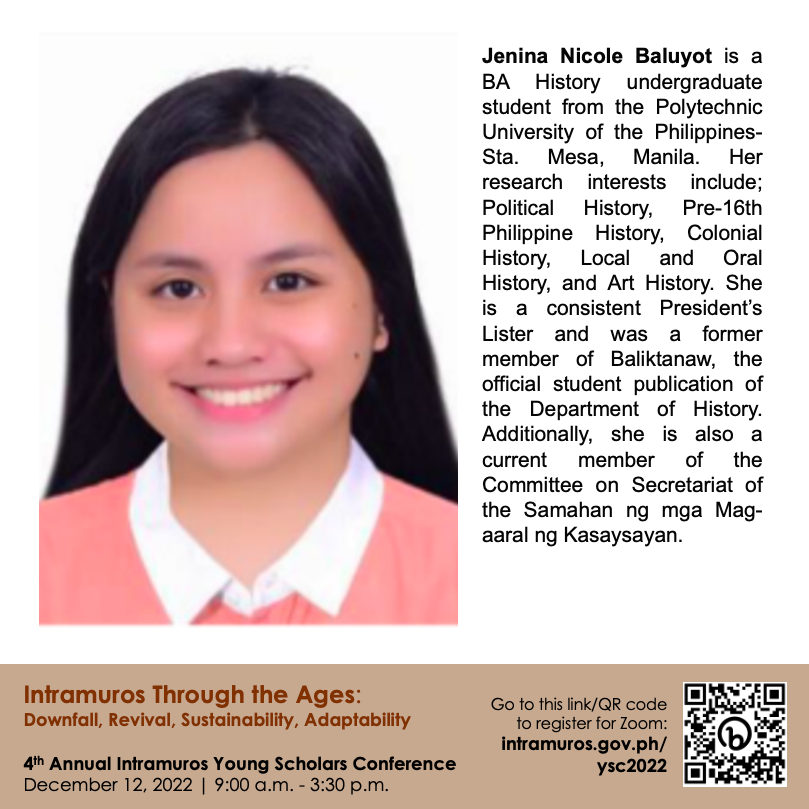 Jenina Nicole Baluyot |
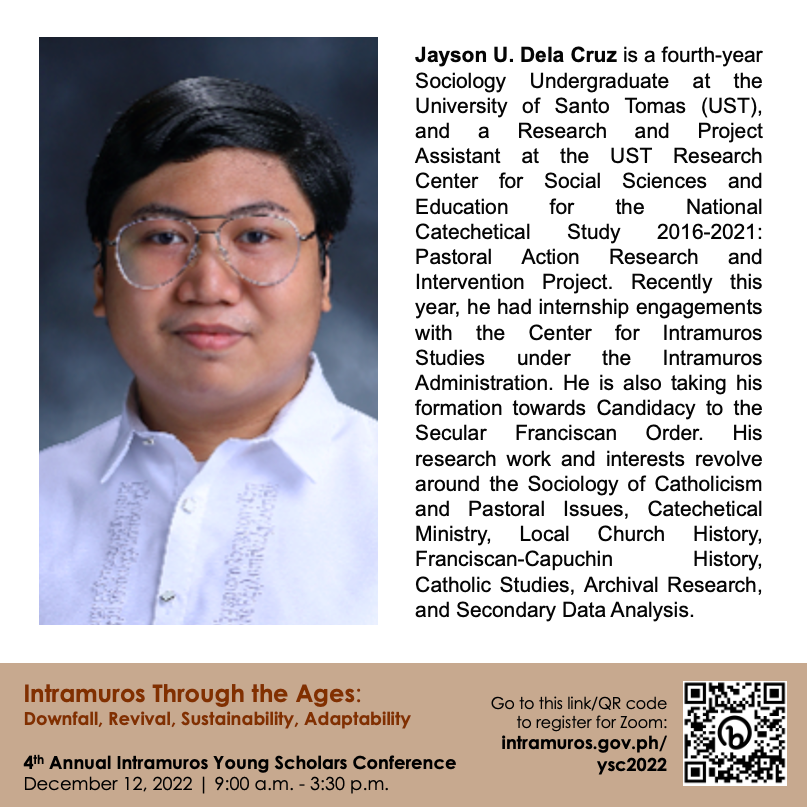 Jayson Dela Cruz | 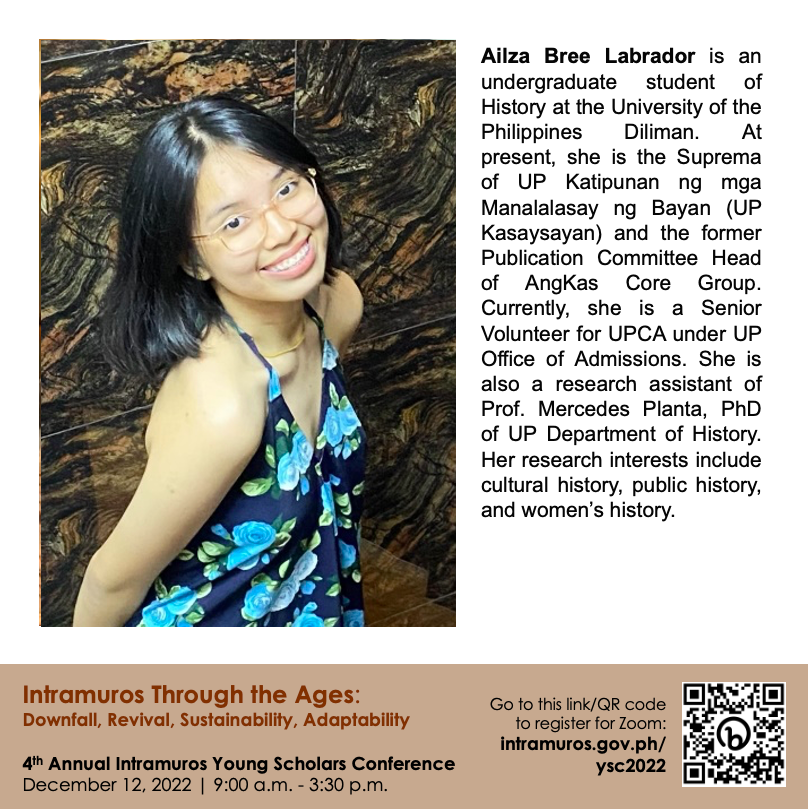 Aliza Bree Labrador |
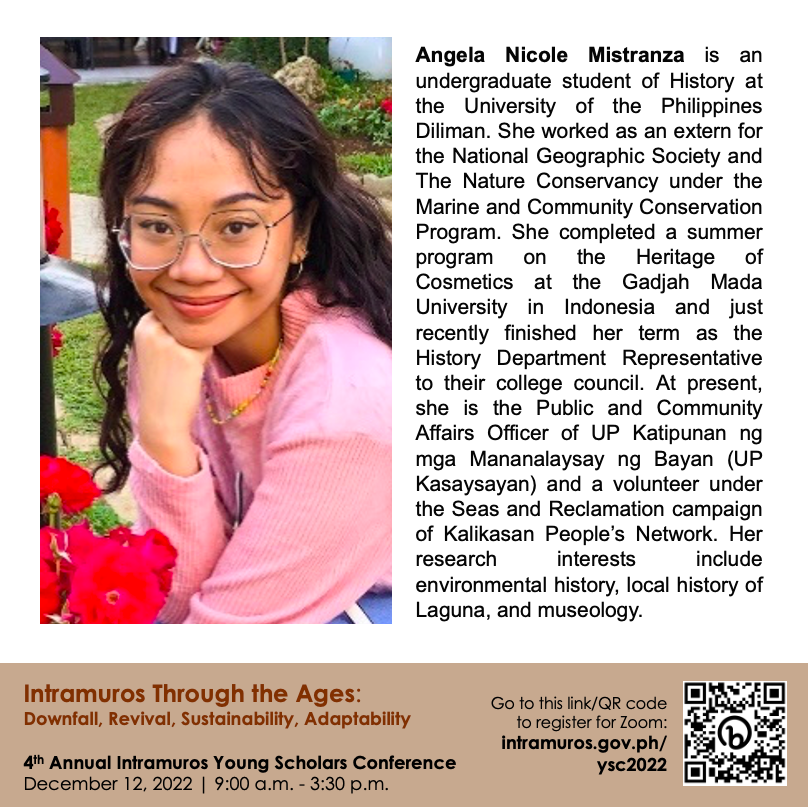 Angela Nicole Mistranza | 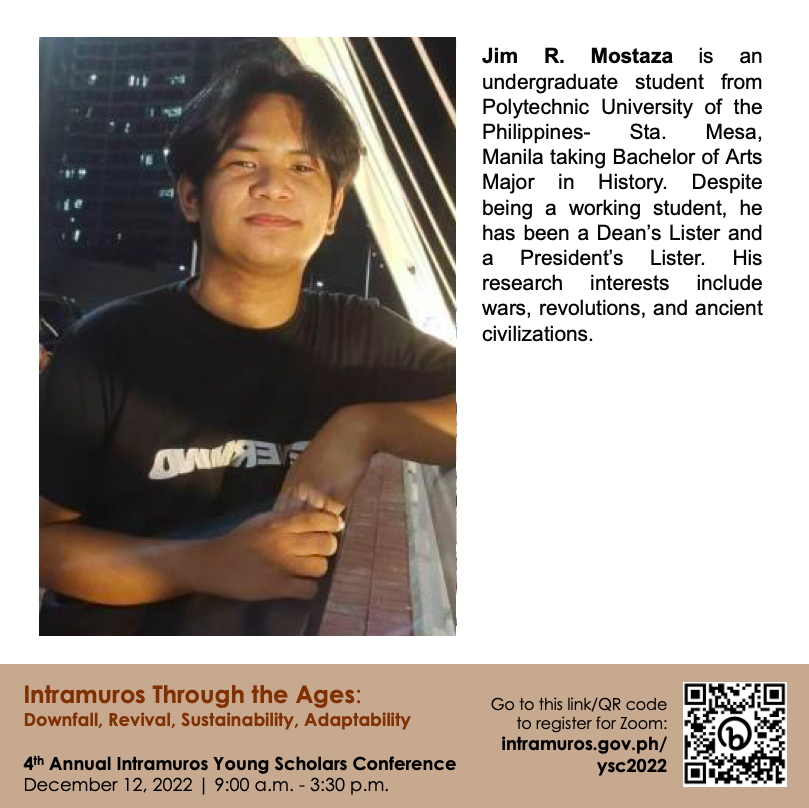 Jim Mostaza |
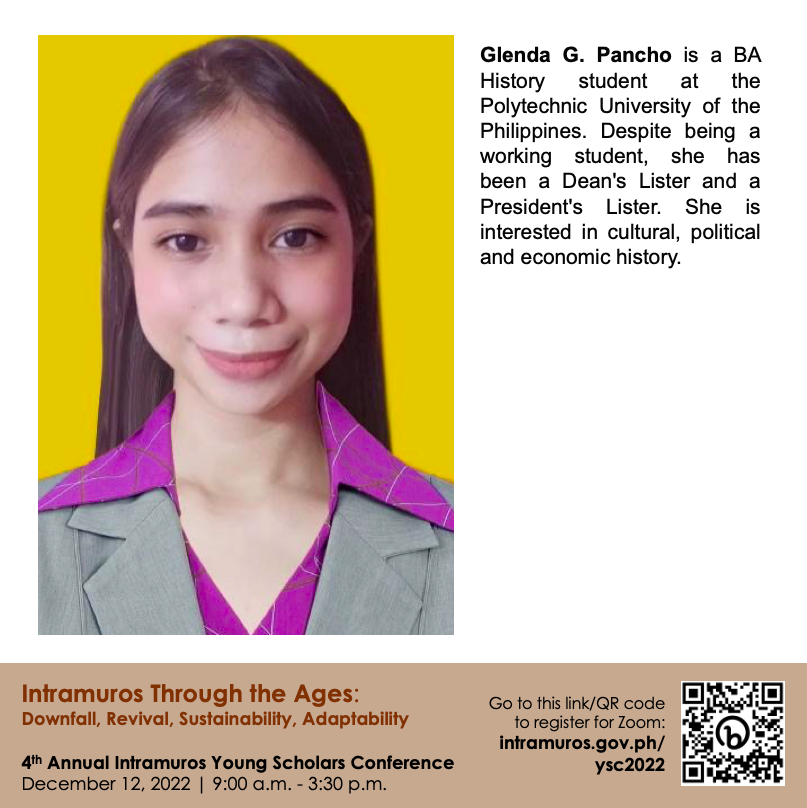 Glenda Pancho | 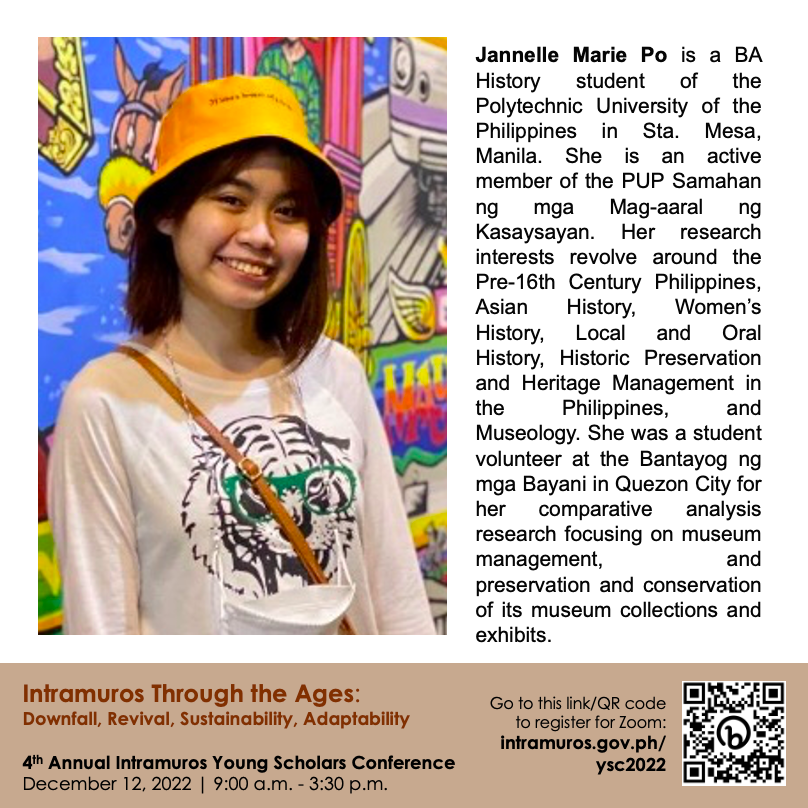 Jannelle Marie Po |
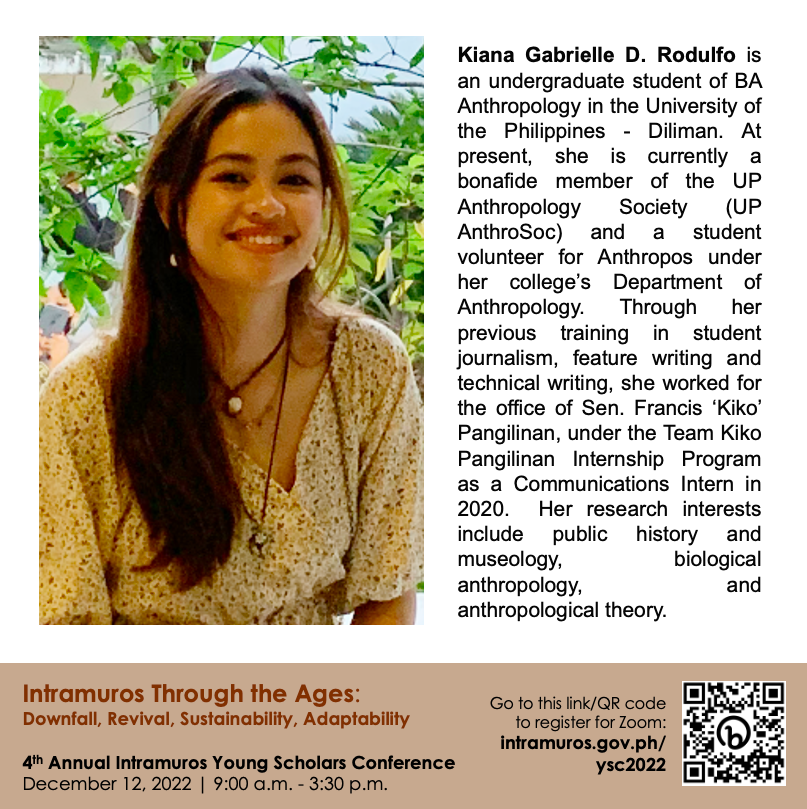 Kianna Gabrielle D. Rodulfo | 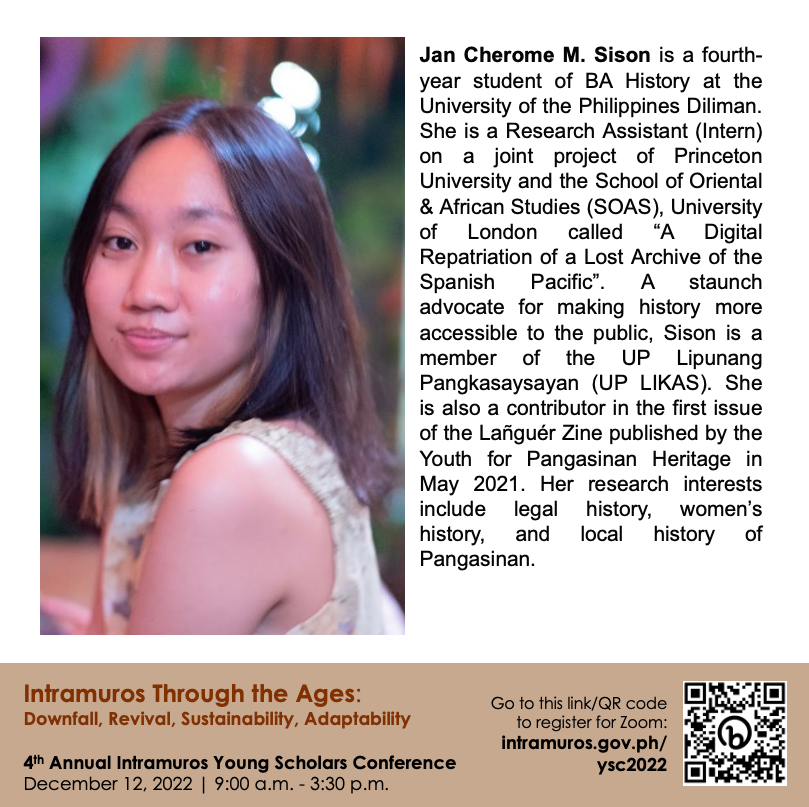 Jan Cherome Sison |
Panel Discussants
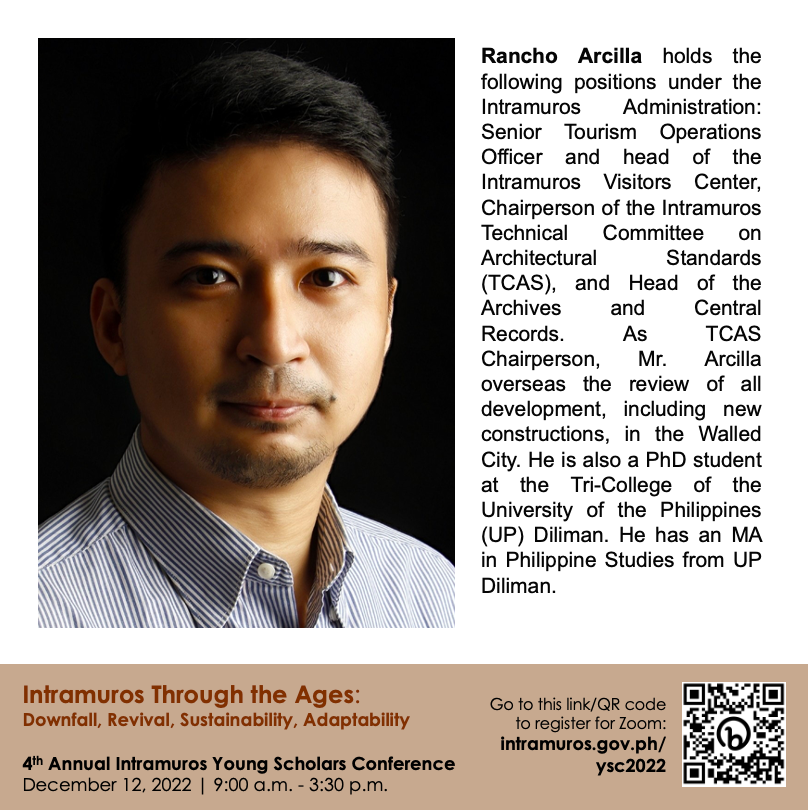 Rancho Arcilla, MA | 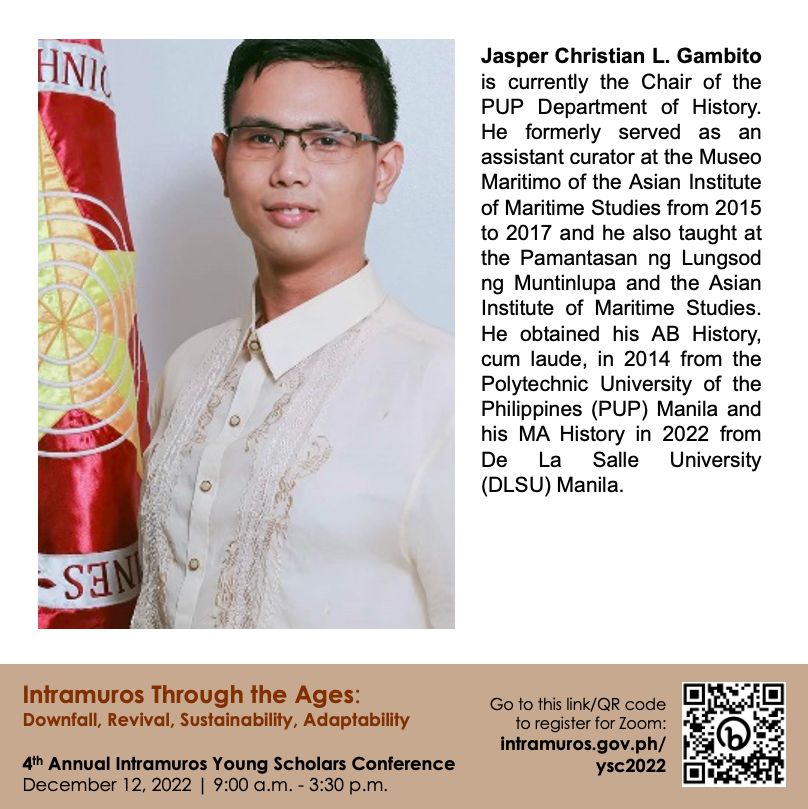 Jasper Christian Gambito, MA |
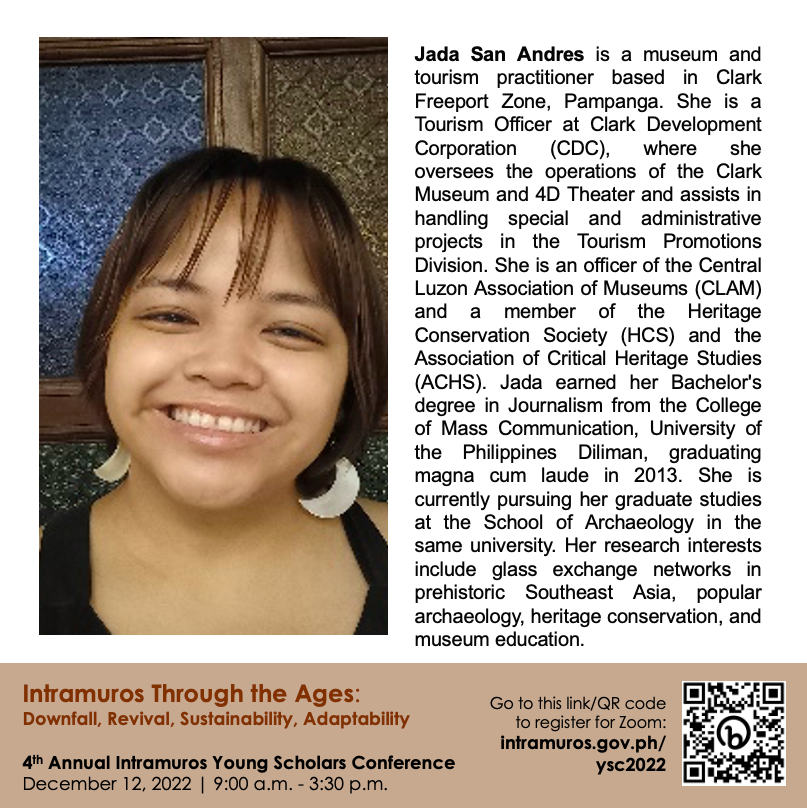 Jada San Andres | 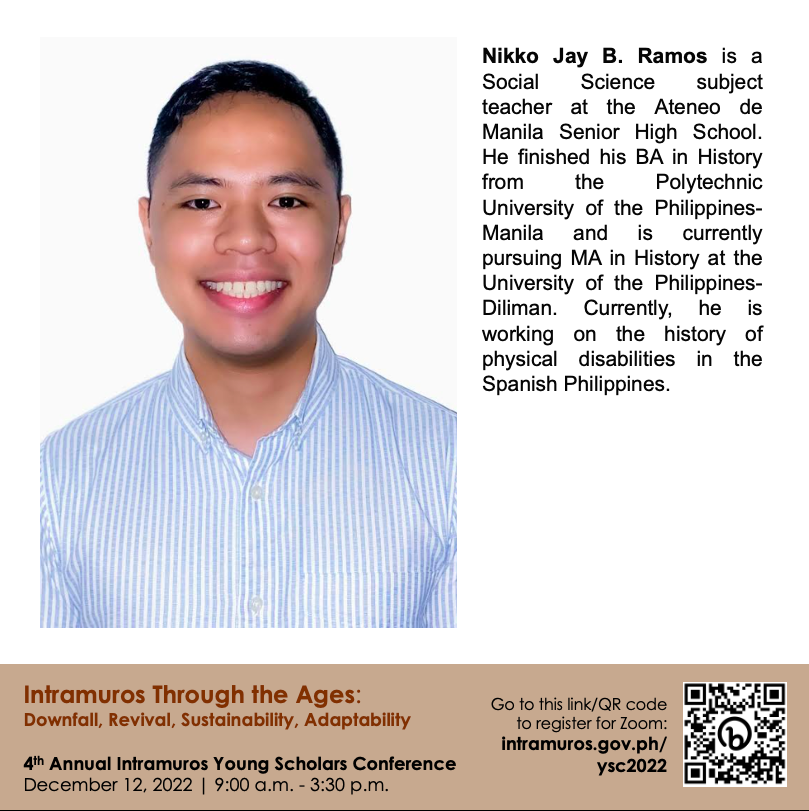 Nikko Jay Ramos |
Other Speakers
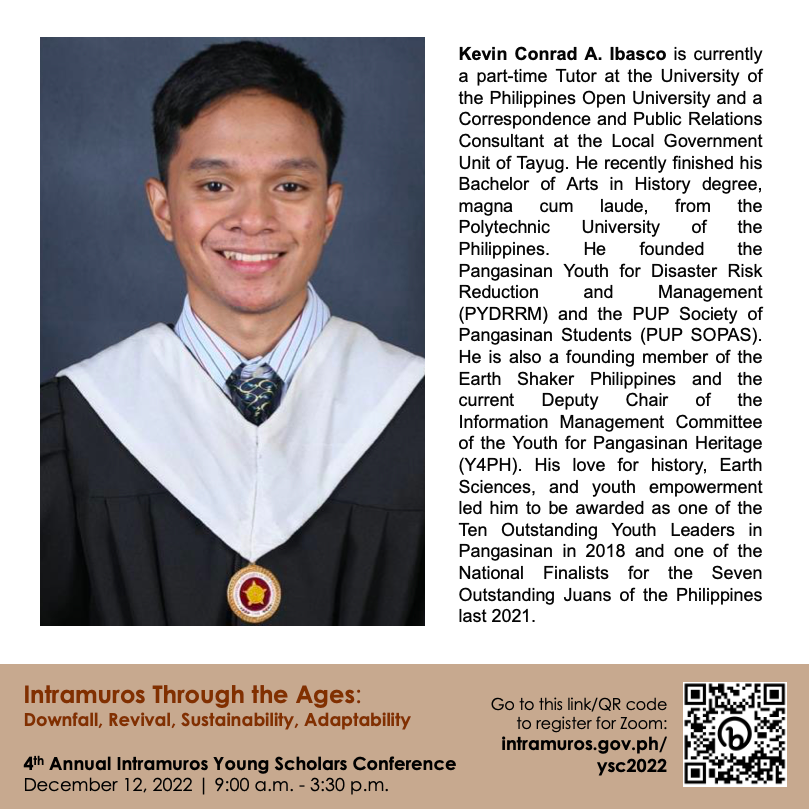 Kevin Conrad A. Ibasco YSC 2022 Keynote Speaker | 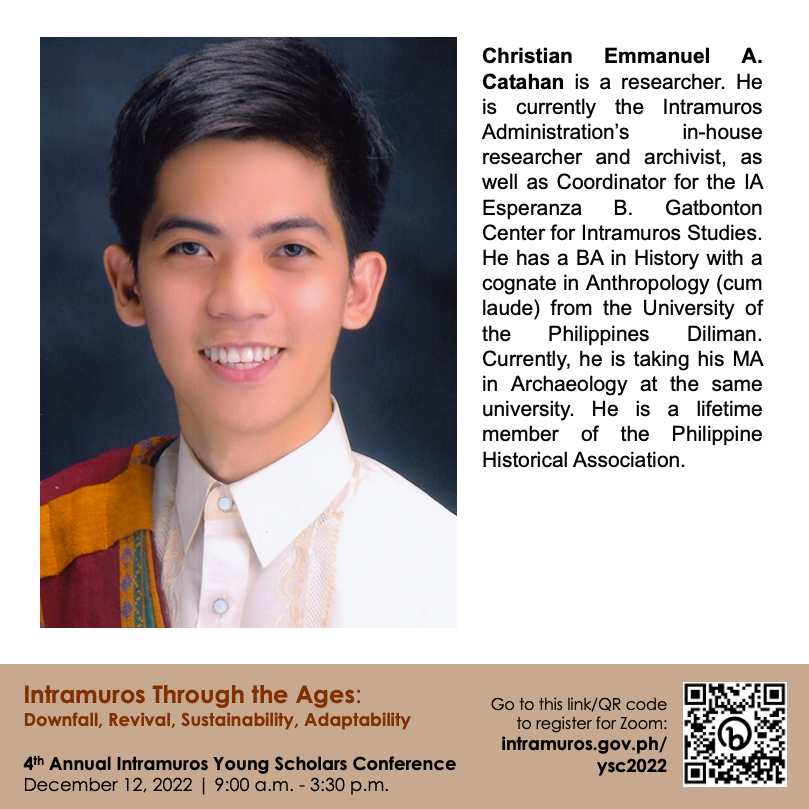 Christian Emmanuel A. Catahan YSC 2022 Moderator |
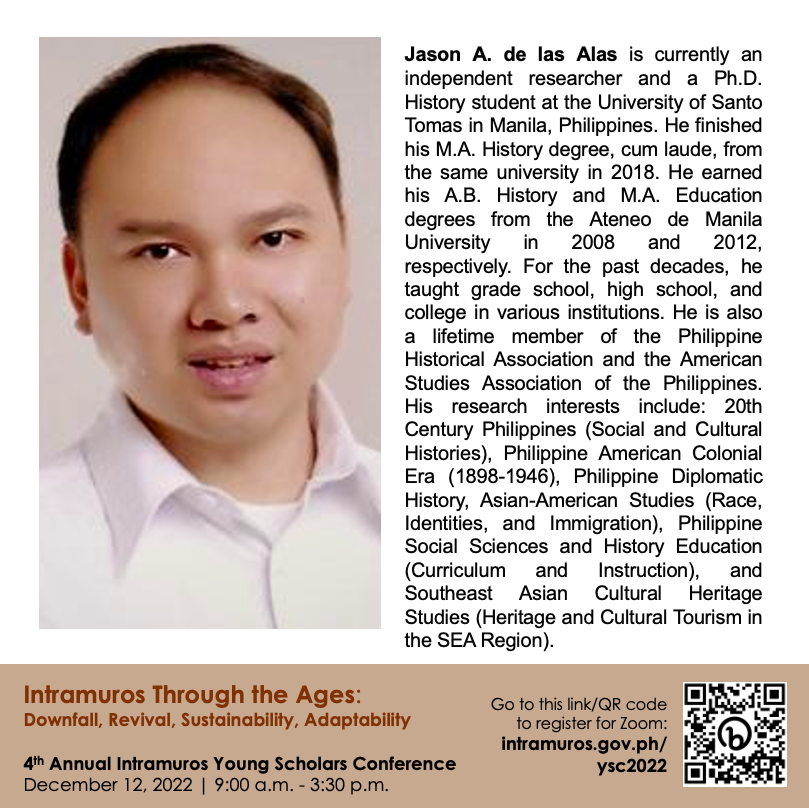 Jason A. de la Alas YSC 2022 Co-Moderator |
Others
Fees
Attendance to the conference whether via Zoom or FB Live is free-of-charge.
Zoom: Application Process for Attendees
Attendance via zoom is limited to 500 persons.
Facebook Live
Those who are unable to join via Zoom may view the conference via Facebook Live.
Conference Kit and Certificate
A conference kit shall be provided to attendees. The kit shall include a pdf copy of the book of abstracts, as well as the Conference Proceedings Report for the 3rd Annual Intramuros Young Scholars Conference in 2021.
About the Organizer

Intramuros Administration
IA is a National Government Agency attached to the Department of Tourism of the government of the Republic of the Philippines. Under Presidential Decree No. 1616, the IA is responsible for the orderly restoration and development of Intramuros as a monument to the Hispanic period of Philippine history. As such, it shall ensure that the general appearance of Intramuros shall conform to Philippine-Spanish architecture of the sixteenth to the nineteenth century.
The mission of IA is to protect and conserve the historical and cultural value and significance of Intramuros while advancing and guiding urban development within, and contributing to the strengthening of the Filipino’s national identity and sense of belonging and pride. IA envisions Intramuros as model urban site of national historical and cultural heritage, sustaining people and life systems within, and contributing to national cultural and socio- economic progress.
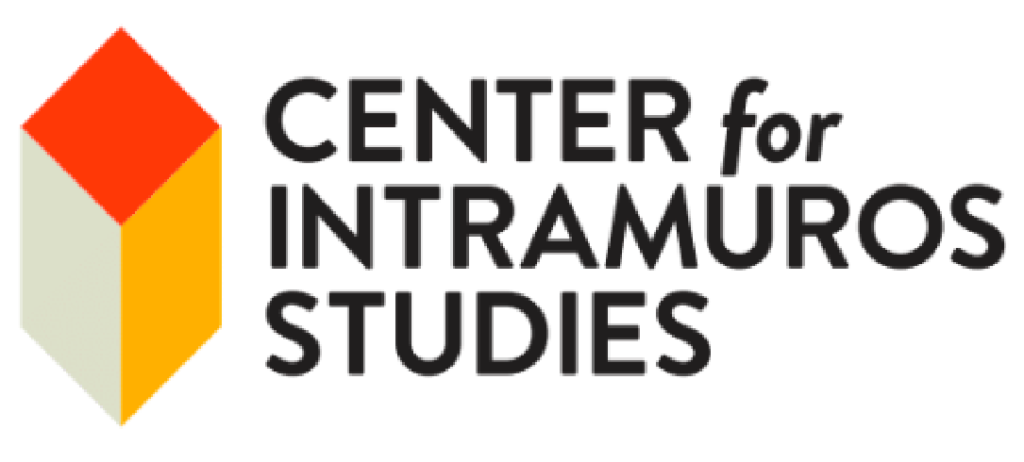
Esperanza B. Gatbonton Center for Intramuros Studies
The Esperanza B. Gatbonton Center for Intramuros Studies is the coordinating body for matters relevant to Intramuros Studies for the Intramuros Administration, specifically for the Archives and Central Records Section, the Fr. Luis Merino Library, the Cultural Properties Conservation Division, and the Urban Planning and Community Development Division. Matters for coordination and assistance includes: webinars, seminars, conferences, exhibitions, research, as well as the maintenance, accumulation, and promotion of materials relevant to Intramuros Studies. It is named after Dr. Esperanza B. Gatbonton.
The Center envisions itself as a leading local studies center in the Philippines. It is a fully accredited member-affiliate of the Local Historical Committees Network (LHCN) under the National Historical Commission of the Philippines.
Working Team
| Officer-in-Charge | Edgardo A. Baysic |
| Main Working Team | Christian Catahan Rancho Arcilla Kelly del Rosario |
| Moderators | Christian Catahan Jason de las Alas |
| Technical Support | Kimberey G. Estrada Joseph Reyes |
| Sponsor | Sandra M. Martinez (for the Zoom account) |
Questions?
- Christian Catahan, Coordinator, Center for Intramuros Studies
- Email: [email protected]
Archives
Check out our previous YSCs!
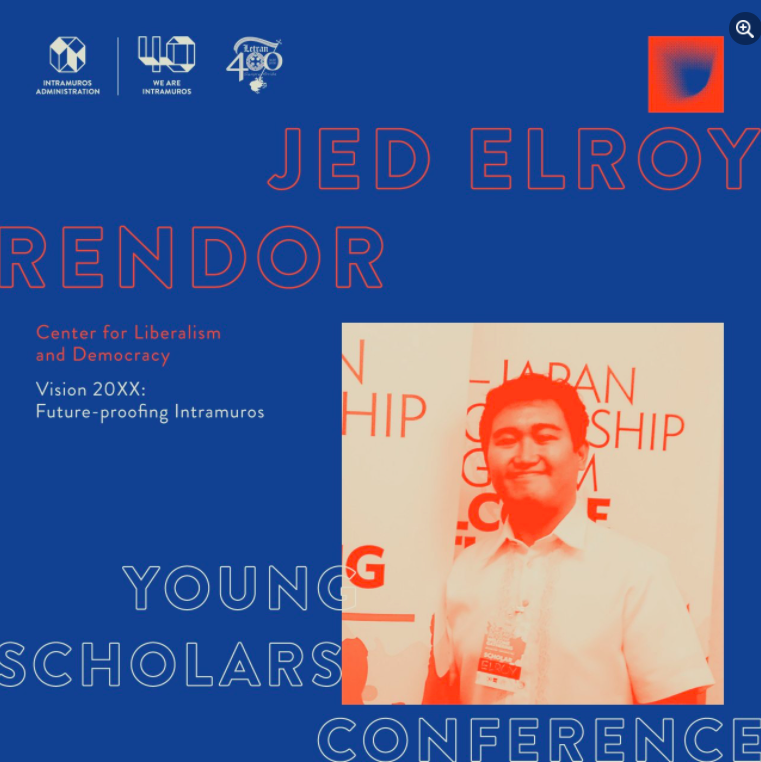 | 2019 1st Annual Intramuros Young Scholars Conference |
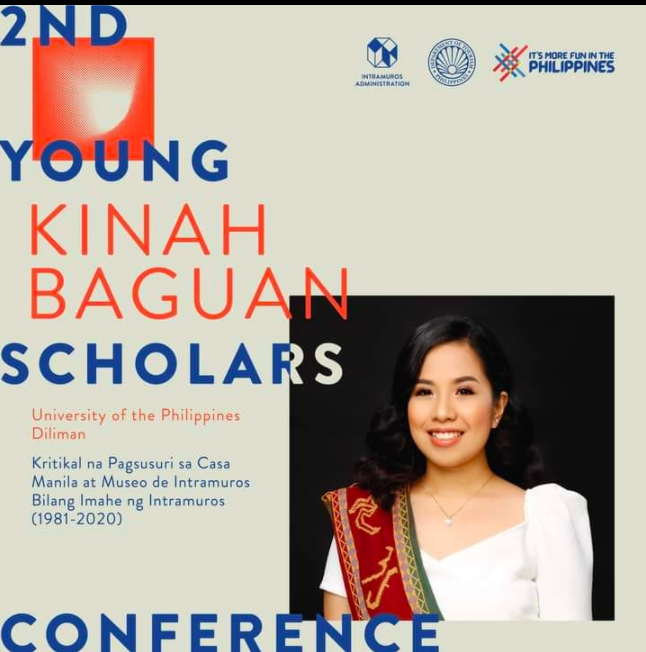 | 2020 2nd Annual Intramuros Young Scholars Conference |
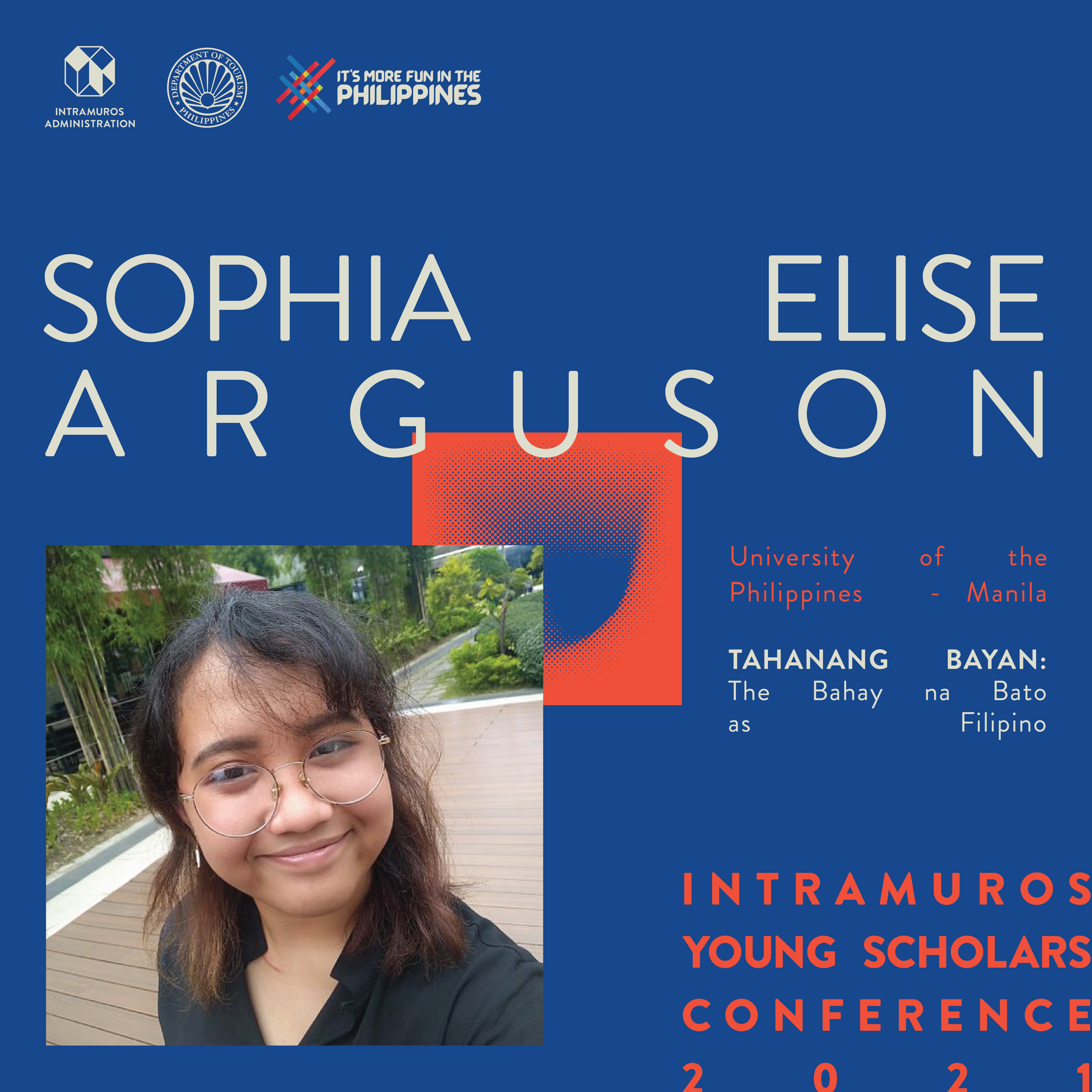 | 2021 3rd Annual Intramuros Young Scholars Conference |
For more information contact the Center for Intramuros Studies via [email protected]
Cannot find what you are looking for? Try requesting for more data via our eFOI Portal.







